If we fill a bread basket half with bread and half with focaccia, which one of the two will run out first? I don’t have scientific statistics, but I’m pretty sure that in 99,9% of the cases the half with focaccia will be the one to be empty first.
Yeast, water, flour, salt and generous extra virgin olive oil create the simplest and mouth-watering delicacy.
If we think about focaccia, our mind goes to one Italian region that loves it so much to eat it even at breakfast with a cappuccino: that’s Liguria, a coastal region of north-western Italy.
The true focaccia genovese (from Genova), or fugässa as it is called in many parts of Liguria, leaves you oily fingers and salty lips. It doesn’t have to be higher than 2 cm, it’s soft inside and slightly crunchy outside, and with lots of dimples that turn out white after baking, thanks to the salamoia (the brine) thrown over the focaccia surface before the last rising steps.
The recipe I share today is from Viva la Foccaccia’s blog, that I slightly changed following some steps and advices from Ezio Rocchi on Scatti di Gusto.
Be careful not to make true holes in the dough when you dimple the focaccia, as it happened to me. Only in this way the brine will make the dimples white and moist. You could think the brine is too much, but trust me, you need to use it completely.
Bread and focaccia are the topic we’re dealing with the bloggers of Cucina Conversations. Have a look at the end of the post to find their recipes!
FOCACCIA GENOVESE
Ingredients for a non-stick baking tray of 40 x 25 cm
300 g flour, type 0
190 g room temperature water
20 g extra virgin olive oil + extra for brushing the tray
7 g salt
3 g malt
16 g fresh yeast
for the brine (recipe by Ezio Rocchi):
100 ml water
5 g salt
25 g extra virgin olive oil
1.Let’s start with lievitino: in standmixer bowl, mix the fresh yeast, the malt with 100 g of water and 100 g of flour. Cover with plastic wrap and let it rest for about 20 minutes.
2. Add evoo, water and the remaining flour and start kneading using the flat beater. When the dough starts to combine, add the salt.
3.Sobstitute the flat beater with the dough hook and continue kneading until the dough is nice and smooth for about ten minutes, stopping every three minutes and turning the dough upside down every time.
4.Put the dough on a floured board and cover with plastic wrap and a rag. Let it rest for about 30 minutes.
5.Flatten the dough and fold one side to the other side, to give more strength to the dough. Cover with plastic wrap and a rag and let it rest for another 30 minutes.
6.Stretch out the dough with a rolling pin. Brush well with evoo the baking tray, and place the dough on it. Cover with a rag and put in the oven with just the lights on (so it reaches about 30°C), and leave it there for about 1 hour and a half.
7.It’s important at this point that the dough cover completely the surface of the tray. Dimple the dough, gently pressing your fingers, so that the focaccia will turn out with the typical texture.
5.To not slow down the rising, the brine should not be cold. So warm up the water at 30°C and add the salt and the oil. Gently throw the liquid over the dough. The liquid should remain on the top, and shouldn’t go under the dough.
6.Cover with a rag and put it again in the oven with the lights on, and leave it there for about 50 minutes.
7.Remove the tray and warm up the oven at 240°C. Bake for about 15 minutes. When it’s ready remove it immediately from the tray. If you wish, you could brush it with extra evoo!
Enjoy!
The other Cucina Conversations recipes about bread and focaccia:
– Rosette soffiate di The Heirloom Chronicles
– Tigelle di Pancakes e Biscotti
– Focaccia di Recco di Italian Kiwi
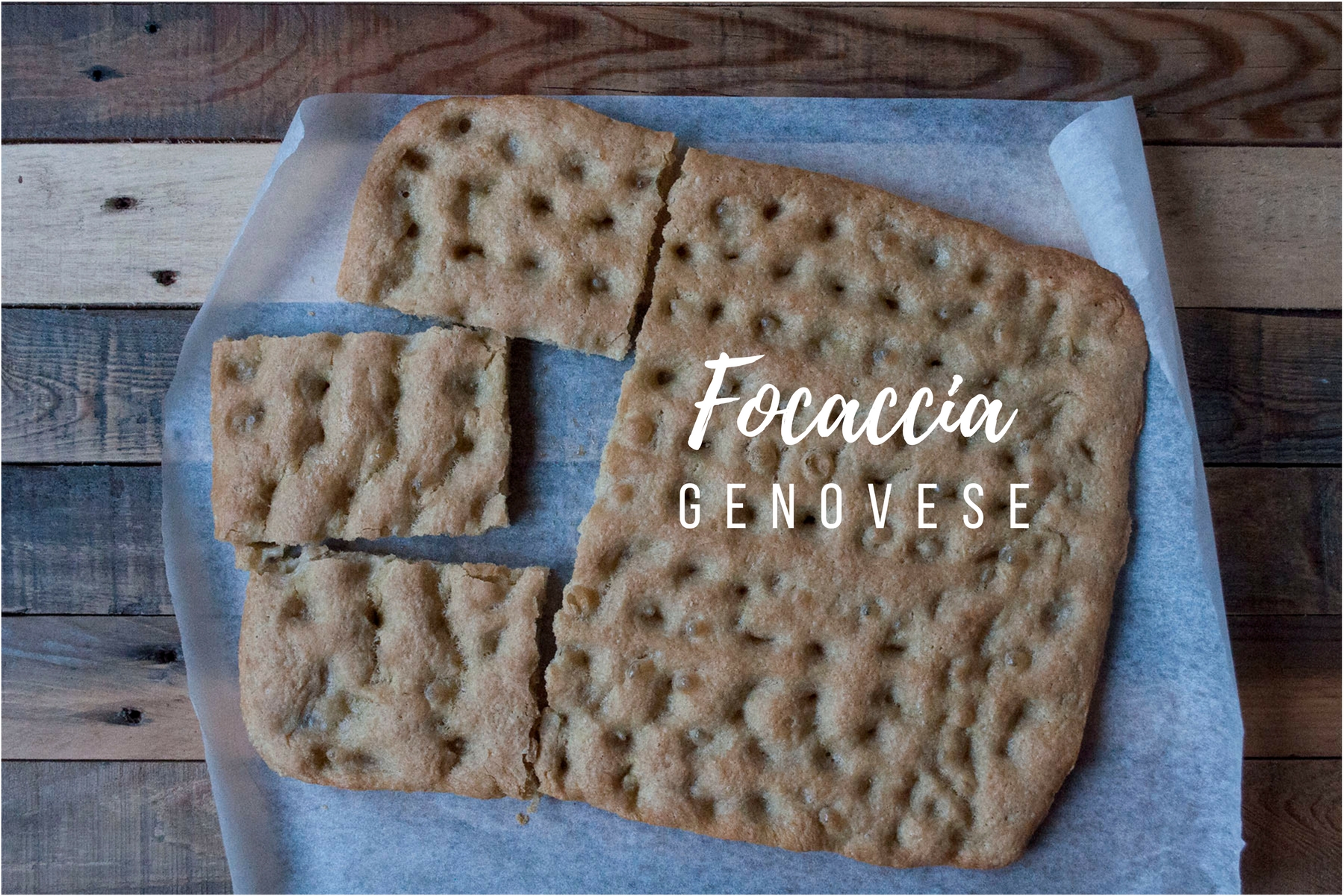




 Based on 0 Review(s)
Based on 0 Review(s)This post is also available in: Italian

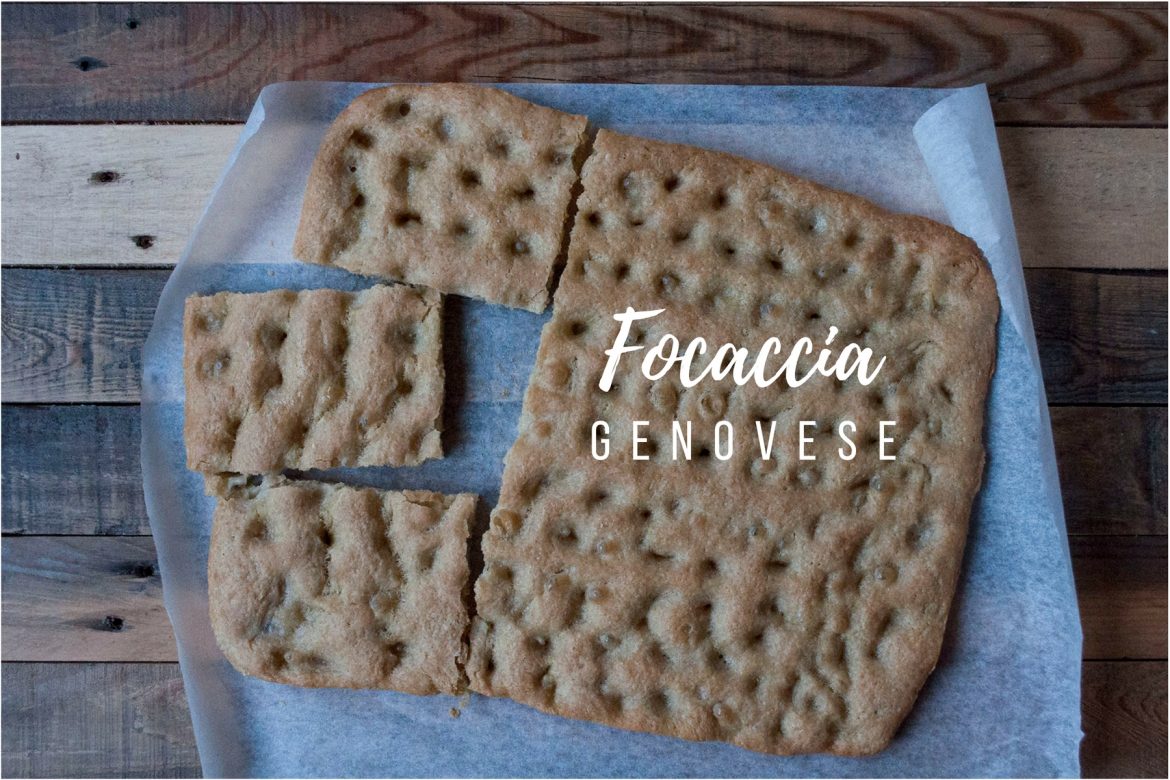
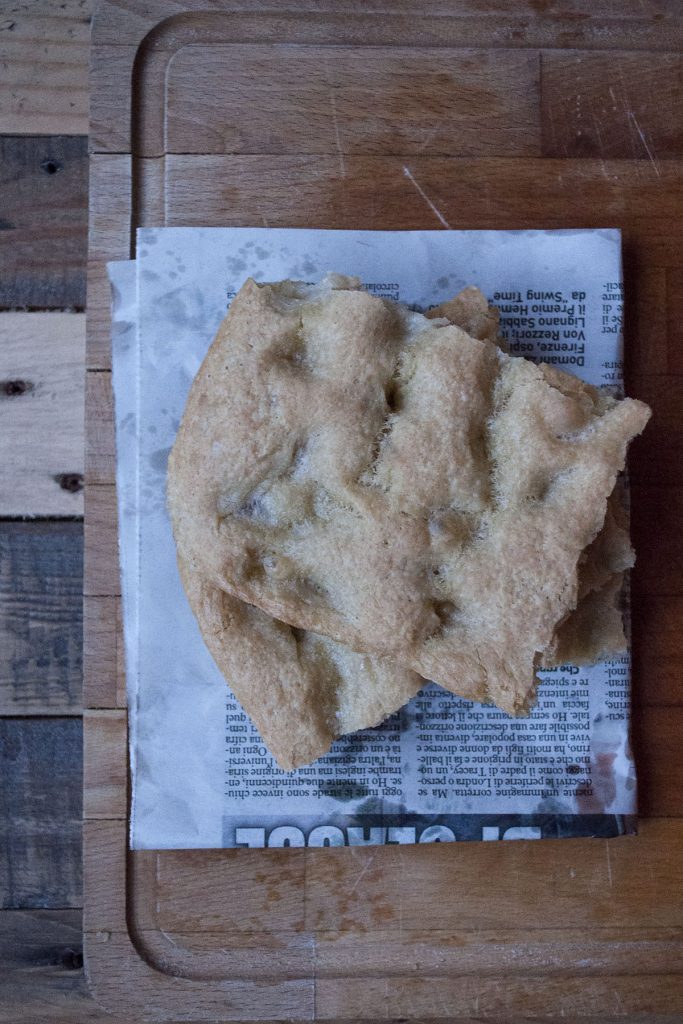

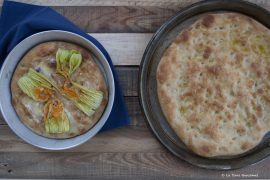
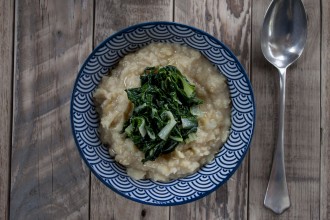
I love this type of focaccia! I make sure I buy some whenever we got to Liguria. Now, I can make it at home, thanks to your recipe! I follow the Viva la Focaccia blog too. It’s great!
Let me know if you try to make it! I tried a couple of recipes, but this one was the best.